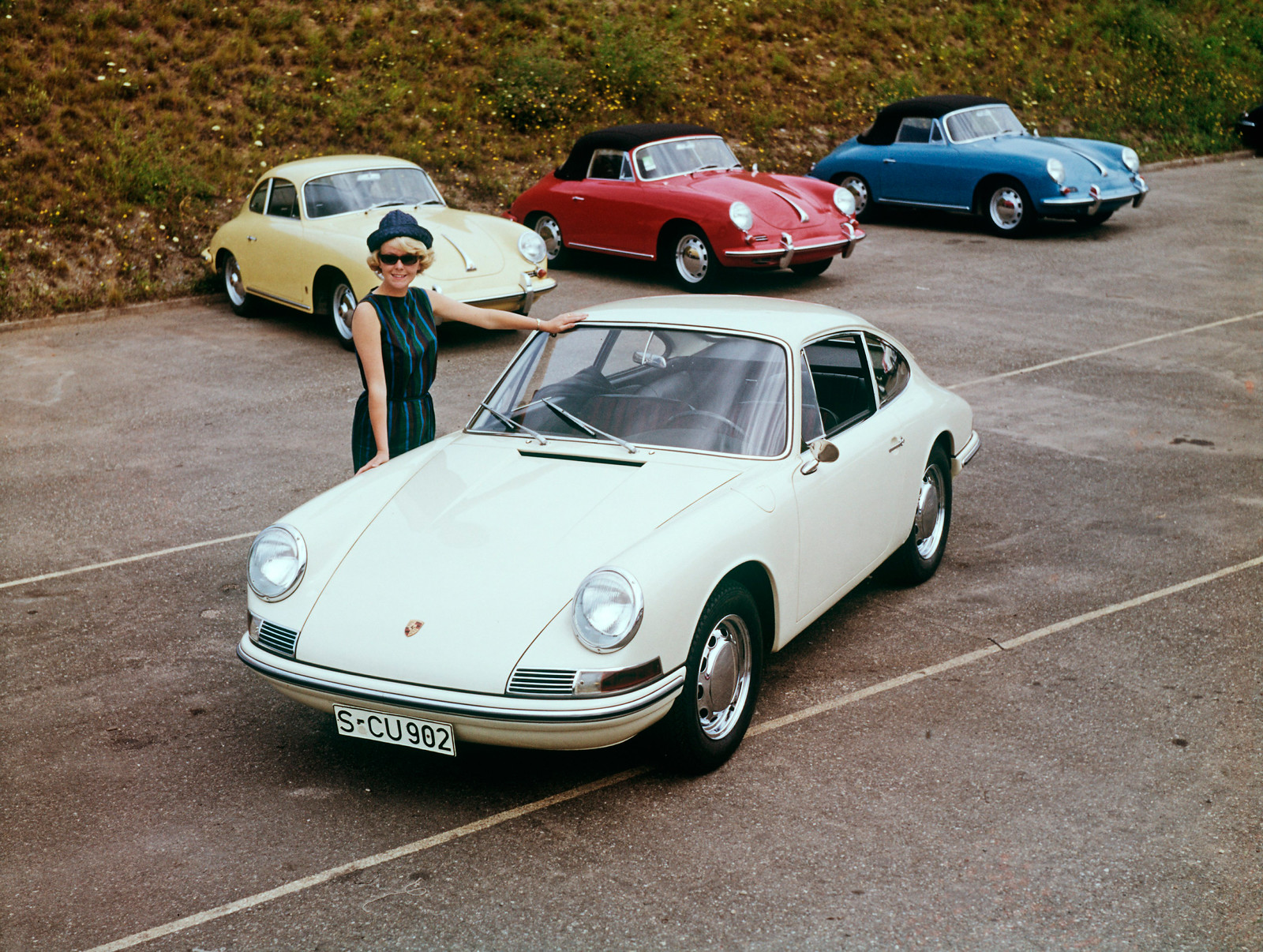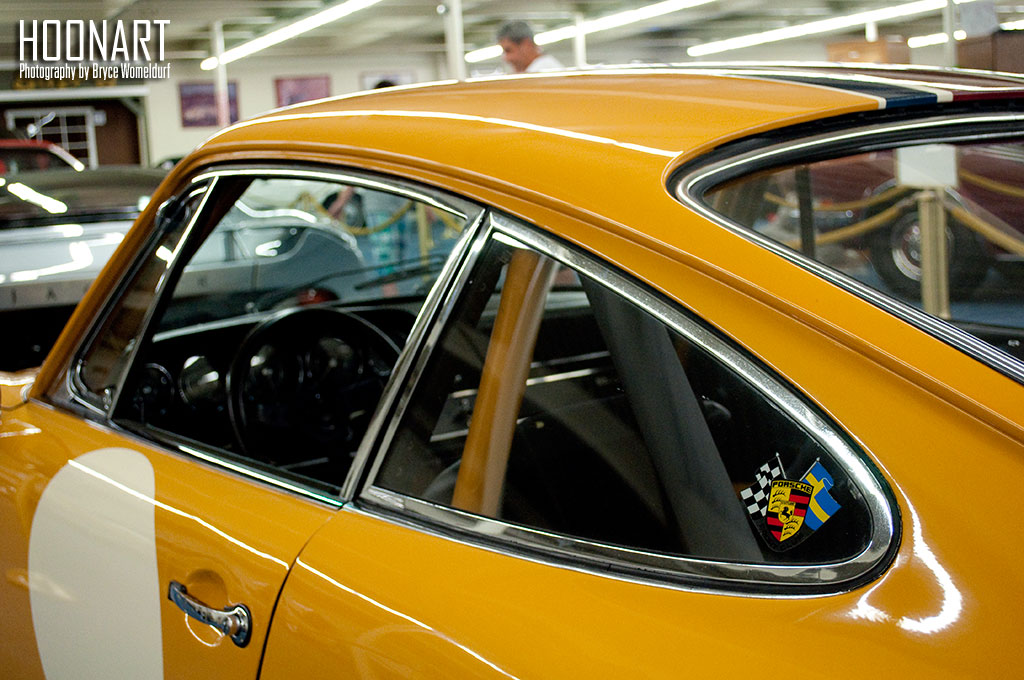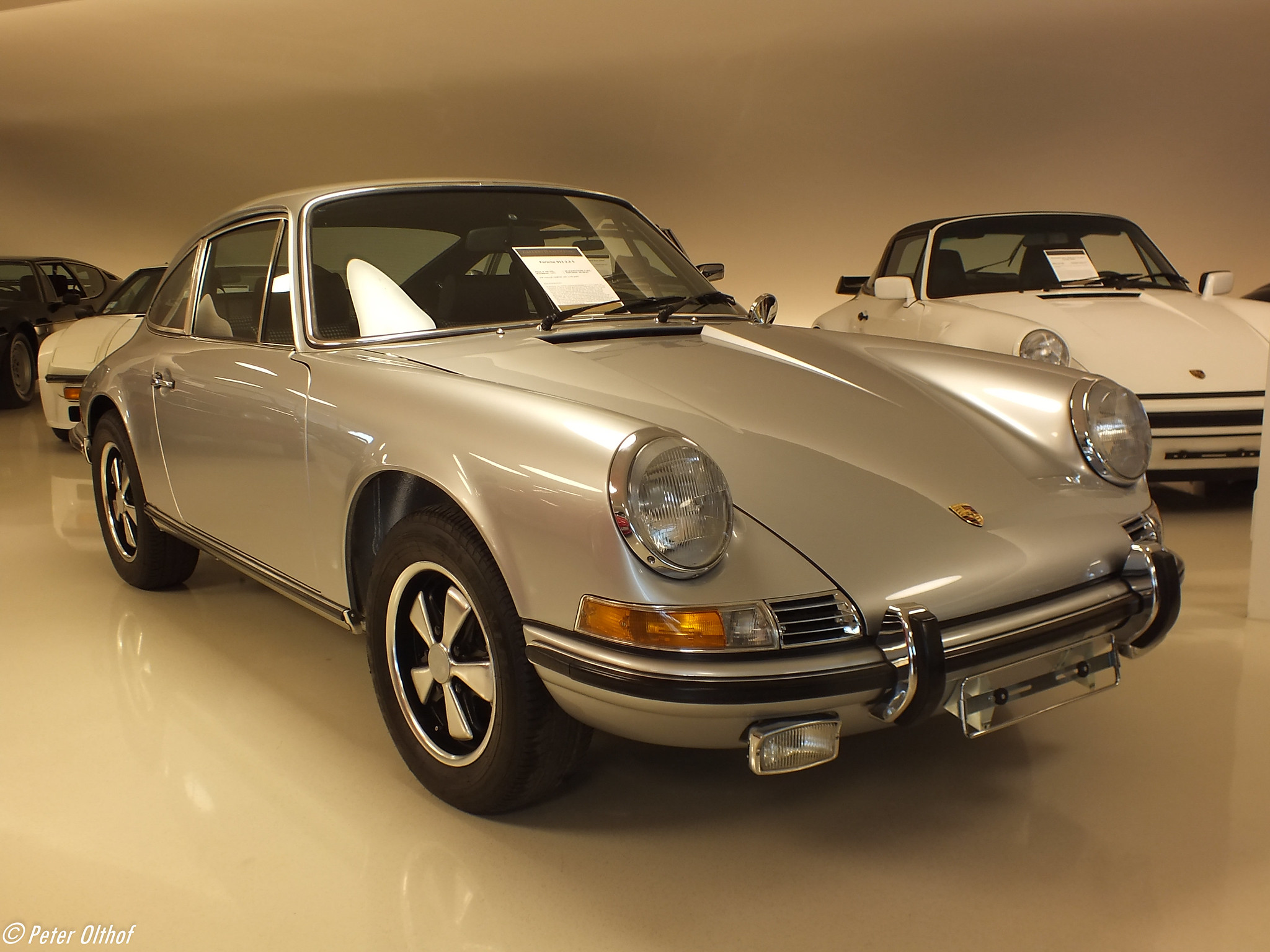Introduction
The original, sometimes called “classic,” Porsche 911’s history fills entire books with information because of its incredibly long 25-year life span; it was produced from 1964 until 1989, when it was finally replaced by the Porsche 911 (964).
Built as a replacement to Porsche’s first model ever, the Porsche 356, the 911 was actually called the Porsche 901 when it first began appearing at car shows in 1963, and into the first few months of its production in late 1964. Porsche would eventually change the name of the 901 to 911 after a legal dispute with Peugeot, which will be covered shortly.
From its first year of production in 1964 all the way through the 1969 model year (MY), the classic 911’s infamous flat-6 “Boxer” engine displaced 2.0-liters: these are the years we will cover in this post. Within the 2.0-liter era there were three distinct lettered “series,” which are commonly referred to as the O-series, A-series and B-series. Each new letter signified an introduction of updates, sometimes major, other times minor.
Why is it called the Porsche 911?
Long before Porsche was manufacturing its own cars, it was actually an engineering design office, founded in 1931 as Dr. Ing. h.c. F. Porsche GmbH by Ferdinand Porsche. Each project was given an “in-house type number,” which would ascend in sequential numerical order with each subsequent project, beginning with the number 7. The Porsche 356 was their 356th project.
But when Porsche’s replacement to the 356 went into production, Porsche decided to start with a new number range in the 900s, as it had not yet been used. They would start with 901 for their new six-cylinder sports car.
Due to a dispute with Peugeot, however, who claimed rights to three-digit model designations with a “0” in the middle, Porsche changed the name to 911 in late 1964. According to Porsche’s website, there are two different reasons why they decided on 911. One is because this number combination was already familiar to all Americans, the USA being one of their most important markets. The other was that using another “1” in the model name would make less work when editing brochures and the name badge on the rear of the vehicle.
1. Porsche 911 O-series (September 1964 to July 1967)
The first 2.0-liter 911s produced were classified as O-series, exact dates above (I’m not sure why they decided to start with O, before beginning in alphabetical order with the A-series in 1968). Porsche used the letter designations to subdivide and classify the original 911s different variations as they began to run out of numbers in the 900s.

“1963_911 Type 901” by Abdullah AlBargan licensed by CC 2.0
1964
Porsche began production of the 901 in September 1964, eventually changing the name to 911 in November 1964 due to the dispute with Peugeot.
None of the 82 examples of the Porsche 901 were sold to the public, although a few are known to be in the hands of private owners.
1964 Porsche 901 specs
- BODYSTYLE(s): coupe
- ENGINE: 2.0L SOHC flat-6 “Boxer” air-cooled 148HP (All horsepower figures used are SAE)
- TRANSMISSION: 5-speed manual
- FRONT SUSPENSION: MacPherson strut, lateral torsion bars, 13mm anti-roll bar
- REAR SUSPENSION: Semi-trailing arm with lateral torsion bars
- PRICE: Never sold publicly
1965
1965 was the first full production year of the Porsche 911, with only a single engine offered: a 2.0L flat-6, mounted behind the rear-axle. According to my research, only a 5-speed transmission was offered in 1965.
One visual cue that distinguishes 1965MY 911’s is the slanted and offset position of the gold 911 lettering at the rear of the car. Beginning from 1966 and forward, the logo was moved to a central position and oriented straight.
According to a Car and Driver review from 1970, demand was extremely high at most Porsche agencies for the new 911, resulting in the first six month’s production being sold out. At the time, the Porsche factory was producing a maximum of four cars per day.
1965 Porsche 911 specs
- BODYSTYLE(s): coupe
- ENGINE: 2.0L SOHC flat-6 “Boxer” air-cooled 148HP
- TRANSMISSION: 5-speed manual
- WEIGHT: 2,376 lbs.
- FRONT SUSPENSION: MacPherson strut, single transverse A-arms connected to lateral torsion bars, 13mm anti-roll bar
- REAR SUSPENSION: Semi-trailing arm with lateral torsion bars
- PRICE: $6,490
1966
Internet sources report that there was no difference between the 1965MY and 1966MY. It wasn’t until 1967 that the 911 received the addition of a new body style and a few different engine options.
1966 Porsche 911 specs
- BODYSTYLE(s): coupe
- ENGINE: 2.0L flat-6 SOHC “Boxer” air-cooled 148HP
- TRANSMISSION(s): 5-speed manual
- WEIGHT: ?
- FRONT SUSPENSION: MacPherson strut, single transverse A-arms connected to lateral torsion bars, 13mm front anti-roll bar
- REAR SUSPENSION: Semi-trailing arm with lateral torsion bars
- PRICE: $5,990
1967
Porsche introduced a new body style in 1967, called Targa, which was their safer alternative to the convertible.
What does the S stand for on a Porsche?
In 1967, Porsche released their first high-power variant of the 911, the 911S. The “S” stands for “Super,” or “Sport,” to denote its more powerful engine and additional performance-enhancing equipment, compared to the base model.
1967 Porsche 911 specs
- BODYSTYLE(s): coupe or Targa
- ENGINE: 2.0L flat-6 SOHC “Boxer” air-cooled 148HP
- TRANSMISSION(s): 4-speed manual standard / 5-speed manual optional (+$80)
- WEIGHT: ?
- FRONT SUSPENSION: MacPherson strut, single transverse A-arms connected to lateral torsion bars, 13mm anti-roll bar
- REAR SUSPENSION: Semi-trailing arm, lateral torsion bars
- PRICE: $5,900 / Targa body: +$400

“1966 Porsche 911S” by Bryce Womeldurf licensed by CC 2.0
1967 Porsche 911S specs
- BODYSTYLE(s): coupe or Targa
- ENGINE: 2.0L flat-6 SOHC “Boxer” air-cooled 180HP
- TRANSMISSION(s): 5-speed manual
- WEIGHT: ?
- FRONT SUSPENSION: MacPherson strut, Koni shocks, single transverse A-arms connected to lateral torsion bars, 15mm front anti-roll bar
- REAR SUSPENSION: Semi-trailing arm, Koni shocks, lateral torsion bars, 16mm rear anti-roll bar
- WHEELS: 5-spoke forged-aluminum “Fuchs” rims 15×4.5J
- PRICE: $6,990
1967 Porsche 911R specs
- BODYSTYLE(s): coupe
- ENGINE: 2.0L flat-6 SOHC “Boxer” air-cooled 210HP
- TRANSMISSION(s): ?
- WEIGHT: 1,760 lbs.
- FRONT SUSPENSION: ?
- REAR SUSPENSION: ?
- WHEELS: ?
- PRICE: DM 45,000
The 911R was built as a prototype to potentially compete in the GT sport class of racing. Engineers started with a 911S and replaced many of the body panels with fiberglass, stripped out all unnecessary items, and used thinner glass or plexiglas where possible, all in an effort to reduce weight. After stripping 506 lbs., they added a type 901/22 race engine, a six-cylinder flat-6 producing 210HP, similar to the one used in the Porsche 906 Carrera 6. Porsche ultimately decided against homologation and thus only produced 19 examples in addition to the 4 prototypes. 15 of those were sold publicly.
2. Porsche 911 A-series (August 1967 to July 1968)
1968
1968 saw the beginning of the A-series 911 and a reconfiguration of the 911 model lineup. This reconfiguration, was, however, different for Europe and the US, because the 911S was not sold in the US in 1968 due to emissions regulations (it would return to the US market in 1969).
In Europe, the base 911 was now called the 911L (“Luxus” or “Luxury”). Porsche also introduced a new model, for Europe only, the 911T.
What is a 911T?
The “T” in 911T actually stands for “Touring,” not Targa. It was first introduced for the 1968 model year as a slightly detuned, less expensive 911 for entry-level buyers, and in its initial year of production was only available in Europe (it would enter the US market in 1969).
Its 2.0-liter, flat-6, 125HP engine used cheaper materials, lower compression pistons, and a less aggressive camshaft profile than the base 911’s 148HP unit. Solid disc brakes, no front or rear anti-roll bars, and a standard equipment list similar to that of the 4-cylinder Porsche 912 all helped keep the 911T’s price reasonable.
The US missed out on the 911T in 1968, but it did receive the 911L. This was not the same as the European 911L, however. It was, instead, basically a European 911S, but without the more powerful engine. A base 911 was also offered alongside the L in the US (not sure if this base 911 was built as an O-series or A-series).
All variants, in either region, were available in either a coupe or Targa body style.
This was also the inaugural year of the Sportomatic semi-automatic transmission, which could be ordered as an option on any six-cylinder 911.
1968 Porsche 911 specs
- USA only in 1968
- BODYSTYLE(s): coupe or Targa
- ENGINE: 2.0L flat-6 SOHC “Boxer” air-cooled 148HP
- TRANSMISSION(s): 4-speed manual / 5-speed manual optional / 4-speed Sportomatic optional
- WEIGHT: ??
- FRONT SUSPENSION: MacPherson strut, single transverse A-arms connected to lateral torsion bars (Reduced size 11mm front anti-roll bar?)
- REAR SUSPENSION: Semi-trailing arm with softer 22mm lateral torsion bars
- PRICE: $6,190
1968 Porsche 911T specs
- Europe only in 1968
- BODYSTYLE(s): coupe or Targa
- ENGINE: 2.0L flat-6 SOHC “Boxer” air-cooled 125HP
- TRANSMISSION(s): 4-speed manual / 5-speed manual optional / 4-speed Sportomatic optional
- WEIGHT: ??
- FRONT SUSPENSION: MacPherson strut, single transverse A-arms connected to lateral torsion bars
- REAR SUSPENSION: Semi-trailing arm with softer 22mm lateral torsion bars
- PRICE: DM 19,000 / Targa body: +DM 1400
The easiest way to identify a 911T is by its silver, rather than gold, logo.
1968 Porsche 911L specs
- USA and Europe
- BODYSTLE(s): coupe or Targa
- ENGINE: 2.0L flat-6 SOHC “Boxer” air-cooled 148HP
- TRANSMISSION(s): 5-speed manual / 4-speed Sportomatic optional (+$280)
- WEIGHT: ?
- FRONT SUSPENSION: MacPherson strut, single transverse A-arms connected to lateral torsion bars. Reduced size 11mm front anti-roll bar (Europe? USA?)
- REAR SUSPENSION: Semi-trailing arm with softer 22mm lateral torsion bars, 15mm(?) rear anti-roll bar (USA likely, not sure about Europe)
- PRICE: $6,190 coupe / $7,190 Targa
1968 Porsche 911S specs
- Europe only in 1968
- BODYSTYLE(s): coupe or Targa
- ENGINE: 2.0L flat-6 SOHC “Boxer” air-cooled 180HP
- TRANSMISSION(s): 5-speed manual / 4-speed Sportomatic optional
- WEIGHT: ??
- FRONT SUSPENSION: MacPherson strut, Koni shocks, single transverse A-arms connected to lateral torsion bars, 15mm anti-roll bar
- REAR SUSPENSION: Semi-trailing arm with Koni shocks, with softer 22mm lateral torsion bars, 15mm rear anti-roll bar
- WHEELS: 5-spoke “Fuchs” rims
- PRICE: DM 24,500 / Targa DM 25,900
3. Porsche B-series (Aug 1968 to July 1969)
1969
In 1969, the Porsche 911 saw its first round of major updates, which included the addition of fuel injection to certain models, and the lengthening of its wheelbase by a little over 2 inches (one source says 2.25in, another 2.4in). Porsche engineers accomplished this by lengthening the rear trailing arms, which moved the rear wheels back. The slightly longer wheelbase aimed to address the volatile handling nature of the earlier, shorter wheelbase “A” and “O”-series cars.
Optional in 1968, fixed rear glass became standard on Targas starting in 1969.
Porsche 911T vs Porsche 911E
Unlike the previous year, Porsche now offered the same three 911 variations in both Europe and the US: the 911T, the 911E, and the 911S. What was originally the 911L the prior year was renamed to the 911E, and kept its place as the “standard” 911, still sitting above the entry-level 911T and below the high-power 911S. Both the 911E and 911S now featured fuel injection; the 911T remained carbureted. The base 911 engine found in the 911E jumped in power to 160HP. The 911S went up to 190HP.
A self-leveling suspension was introduced as standard on the 911E, and as an option for the 911T and 911S. The Boge struts tended to leak and were expensive to replace, thus most 911s with the self-leveling system have been changed back to a conventional setup with shocks and torsion bars.
Specifications are available for both the 911T and 911E below for a quick comparison.
How much is a 1969 Porsche 911 worth?
At The Porsche 70th Anniversary Auction in October 2018, hosted by RM Sotheby’s, a 1969 Porsche 911E Coupe sold for $123,200. It is a fully restored example.
In comparison, we see a 1969 Porsche 911 S Targa being offered for $54,500 by Beverly Hills Car Club via the duPont Registry’s website. Mileage is not specified.

“1968 Porsche 911 2.0 T Karmann LWB” by peterolthof licensed by CC 2.0
1969 Porsche 911T specs
- BODYSTYLE(s): coupe or Targa
- ENGINE: 2.0L flat-6 SOHC “Boxer” air-cooled 125HP
- TRANSMISSION(s): 4-speed manual standard / 5-speed manual optional (US/Europe) / 4-speed Sportomatic optional (US/Europe)
- WEIGHT: 2,360 lbs coupe
- FRONT SUSPENSION: MacPherson strut, single transverse A-arms connected to lateral torsion bars
- REAR SUSPENSION: Semi-trailing arm, 22mm lateral torsion bars
- PRICE: $5,795
1969 Porsche 911E specs
- BODYSTYLE(s): coupe or Targa
- ENGINE: 2.0L flat-6 SOHC “Boxer” air-cooled 160HP
- TRANSMISSION(s): 4-speed manual standard (US) / 5-speed manual optional (US) / 5-speed manual standard (Europe) / 4-speed Sportomatic optional (US/Europe)
- WEIGHT: 2,410 lbs coupe
- FRONT SUSPENSION: Boge self-leveling hydropneumatic struts, single transverse A-arms
- REAR SUSPENSION: Semi-trailing arm, 22mm lateral torsion bars (no rear anti roll bar?)
- PRICE: $6,995
1969 Porsche 911S specs
- BODYSTYLE(s): coupe or Targa
- ENGINE: 2.0L flat-6 SOHC “Boxer” air-cooled 190HP
- TRANSMISSION(s): 5-speed manual / 4-speed Sportomatic optional
- WEIGHT: 2,370 lbs coupe
- FRONT SUSPENSION: MacPherson strut, Koni shocks, single transverse A-arms connected to lateral torsion bars, 15mm anti-roll bar
- REAR SUSPENSION: Semi-trailing arm with Koni shocks, 22mm lateral torsion bars, 15mm rear anti-roll bar
- WHEELS: 5-spoke “Fuchs” rims
- PRICE: $7,695 / Targa body: +$620
